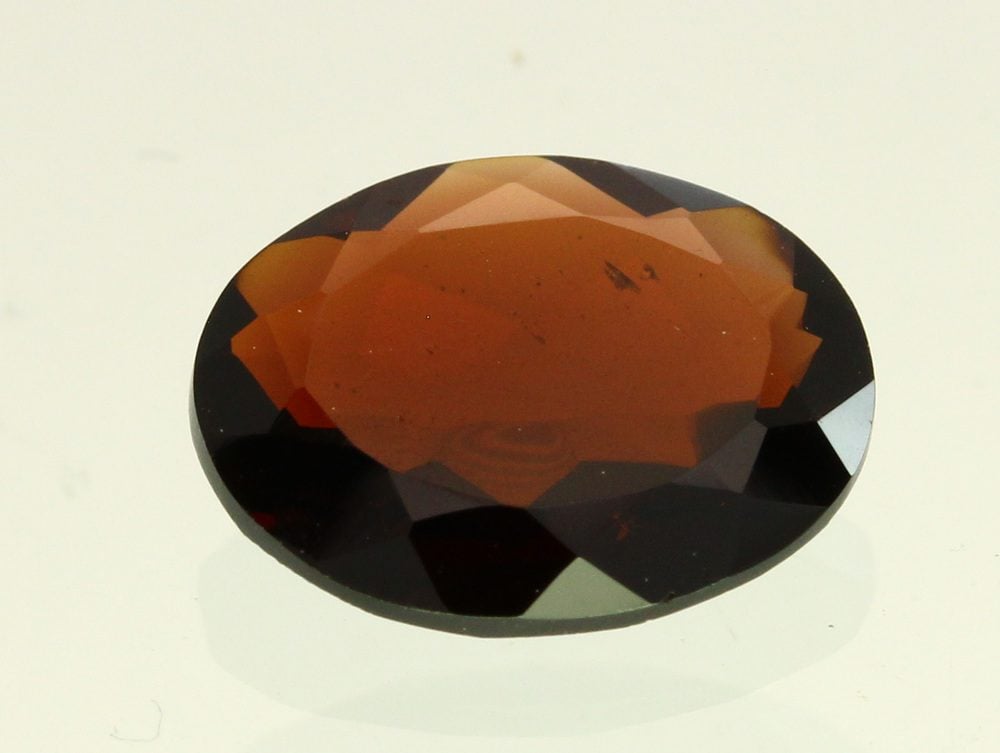Staurolite Value, Price, and Jewelry Information
Staurolite crystals in opaque cross shapes are popular gemstones. However, this material is very rarely transparent or facetable. These dark colored gems would make very durable jewelry pieces.
3 Minute Read
Staurolite crystals in opaque cross shapes are popular gemstones. However, this material is very rarely transparent or facetable. These dark colored gems would make very durable jewelry pieces.
Start an IGS Membership today
for full access to our price guide (updated monthly).Staurolite Value
Why are Staurolites Called "Fairy Stones"?
Staurolites can form as twinned crystals at either 60° or 90°, creating interesting natural cruciform pieces. Thus, these stones are popularly called "fairy crosses" or "fairy stones." They've inspired a number of symbolic associations over time. According to George F. Kunz, the noted mineralogist and folklorist, a Virginia legend holds that the tears of fairies crying at the news of Christ's death turned into these stones. People from many cultures throughout history have also treated cross-shaped staurolites as good luck charms.
Staurolite crystals with both 60° and 90° twinning are extremely rare.
Does Staurolite Make a Good Jewelry Stone?
As natural or polished cross-shaped crystals in raw stone jewelry designs, staurolites are very popular. With a hardness of 7-7.5, they make very durable jewelry stones, especially as pendants.
Faceted staurolites would also make durable jewelry stones. However, such gems are rarely transparent, always small, dark in color, and lack fire or dispersion. Additionally, stones with cavities associated with fractures that extend to the surface may have structural weakness. These may also collect dirt and grime. (Staurolite surface cavities typically occur when mineral inclusions weather out of the stone). For these reasons, staurolite are seldom faceted.
You're more likely to find faceted staurolites as prized specimens on display in rare gem collections than in jewelry collections.
Staurolite rough and cut set, Keivy, Keivy Mountains, Kola Peninsula, Russia. 4.3 x 3.1 x 2.3 cm (crystal), 1.08-ct (brilliant pear-cut gem, source unknown). © Rob Lavinsky, www.iRocks.com. Used with permission. (Gem photo cropped to show detail and slide show created to facilitate comparison).
Identifying Characteristics
Zincian Staurolite
Though very rare, zinc-bearing staurolites have lighter colors and make more attractive cut gems.
- Specific Gravity: 3.79.
- Refractive Indices: 1.721-1.731.
- Absorption Spectrum: Strong broad bands at 6100 and 6320, weaker narrow bands at 5315; spectrum absorbed beyond 4900.
- Pleochroism: Trichroic, green/red/yellow.
- Color Change: May be red-brown in incandescent light, yellow-green in daylight.
Lusakite
A deep blue, strongly pleochroic cobalt-bearing staurolite from Lusaka, Zambia.
Are There Synthetic Staurolites?
Scientists have synthesized staurolites for petrological and crystallographic research. However, there is no known jewelry use for this material.
Staurolite crystals aren't rare. However, people have created simulations of cruciform crystals due to their popular symbolic associations. The manufacture of faux "fairy crosses" goes back at least a century. In the 1910s and 1920s, the mineralogist Joseph K. Roberts examined specimens from Georgia, Tennessee, and Virginia and learned how some were likely created. In a 1934 article in American Mineralogist, Roberts noted that 90° "Roman Cross" shapes dominated the market, despite being the rarer variety. He discovered that many were cut from much softer talcose material, filed into shape, and then soaked in linseed or other oils to darken them. (A GIA note from 1963 describes a similar talcose imitation dipped in paraffin).
Apparently, the demand for transparent, facetable staurolite hasn't yet generated the same level of industrious deception.
Staurolite Enhancements
Cruciform staurolites may be filed to improve the appearance of their terminations or smooth out surface cavities.
Although weathering may give natural specimens a pitted appearance, Roberts also noted in his 1934 article that some imitations received artificial pockmarks to appear more natural!
Where are Staurolites Found?
Brazil and Switzerland will occasionally produce facetable crystals.
Various locations in the United States yield "fairy crosses." Visitors to Fairy Stone State Park in Virginia and Blanchard Dam, near Little Falls, Minnesota, may gather them off the ground. (However, digging for staurolites at these locations isn't permitted).
Other notable crystal sources include
- United States: Connecticut; Georgia (the state mineral); Maine; New Hampshire; New Mexico (fine twinned crystals); North Carolina; Vermont.
- Canada; France; Russia; Scotland; Spain.
- Lusaka, Zambia: lusakite.
Stone Sizes
Always tiny, cut staurolites from Brazilian or Swiss material generally weigh under 2 carats.
- Smithsonian Institution (Washington, DC): 3.0 (dark brown, Brazil).
How to Care for Staurolite Gemstones
Stay on the safe side and clean any staurolites, faceted or natural crystals, with a soft brush, mild detergent, and warm water. Otherwise, these gems require no special care. Consult our gemstone jewelry cleaning guide for more recommendations.
Joel E. Arem, Ph.D., FGA
Dr. Joel E. Arem has more than 60 years of experience in the world of gems and minerals. After obtaining his Ph.D. in Mineralogy from Harvard University, he has published numerous books that are still among the most widely used references and guidebooks on crystals, gems and minerals in the world.
Co-founder and President of numerous organizations, Dr. Arem has enjoyed a lifelong career in mineralogy and gemology. He has been a Smithsonian scientist and Curator, a consultant to many well-known companies and institutions, and a prolific author and speaker. Although his main activities have been as a gem cutter and dealer, his focus has always been education. joelarem.com
International Gem Society
Related Articles
Black Diamond Value, Price, and Jewelry Information
Chameleon Diamond Value, Price, and Jewelry Information
Gray Diamond Value, Price, and Jewelry Information
Green Diamond Value, Price, and Jewelry Information
Latest Articles
800 Years of Mogok: A Celebration in Tenuous Times
What is the Average Gemstone Faceting Yield?
Pyroxmangite Value, Price, and Jewelry Information
How to Identify Emerald Simulants and Synthetics
Never Stop Learning
When you join the IGS community, you get trusted diamond & gemstone information when you need it.
Get Gemology Insights
Get started with the International Gem Society’s free guide to gemstone identification. Join our weekly newsletter & get a free copy of the Gem ID Checklist!
